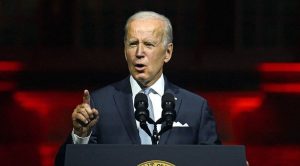The Inflation Reduction Act is just a few steps away from implementation. The US House of Representatives is expected to vote on the legislation on Friday, sending it to US President Joe Biden’s desk for approval.
The bill had a tough time in the US Senate, with clear partisan views. It was ultimately passed with Vice President Kamala Harris’ tie-breaking vote.
Also Read: Inflation bill marking shift in Democratic Party’s luck before midterms?
US Senator Joe Manchin, a centrist Democrat, was the sponsor of the bill. This meant that the progressives did not get everything they asked for. Some measures, which were long promised by Democrats, were snubbed.
The package, nowhere near the sweeping Build Back Better program Biden once envisioned, remains a sizable undertaking and, along with COVID-19 relief and the GOP 2017 tax cuts, is among the more substantial bills from Congress in years.
While Congress did pass and Biden signed into law a $1 trillion bipartisan infrastructure bill for highways, broadband and other investments that were part of the White House’s initial vision, the Democrats’ other big priorities have slipped away.
Gone, for now, are plans for free pre-kindergarten and community college, as well as the nation’s first paid family leave programme that would have provided up to $4,000 a month for births, deaths and other pivotal needs. Also allowed to expire is the enhanced child care credit that was providing $300 a month during the pandemic.
Also Read: What is the budget reconciliation process in US Senate?
The White House, and other senior Democrats, have vowed that the bill would have a deep impact on a variety of issues like climate change, tax policies and health care restrictions in the United States.
The estimated $740 billion package is made up of $440 billion in new spending and $300 billion toward easing deficits. Smaller amounts have been kept aside for climate change and health care.





